Where do Baboons live? (Baboons’ Habitat & Range)
In brief: Where do Baboons live?
Baboons are those species of Old World Monkeys that fall under the Family Cercopithecidae of the Infraorder Simiiformes under the primates (Order Primata) of the Animal Kingdom.
There are altogether 5 species of baboon that fall under the genus Papio, one of the 23 genera of Old World Monkeys.
These 5 species are: Hamadryas baboon, Guinea baboon, Olive baboon, Yellow baboon, and Chacma baboon
Many of the species are native to Africa, and a few like the Hamadryas baboon can be found in Arabia as well.
So, it can be said that baboons live in some of the dry and semi-arid regions of Africa and Arabia.
In fact, they are found more preferably in the open savannas and woodlands across Africa. It is also to be noted that, unlike most monkeys, only a few baboons live in the tropical forests.
They are all ground-dwelling animals, meaning that they use the land to forage and move from one place to another.
They take shelter in trees where they spend their nighttime and the time when they think they are vulnerable to predators. They usually sleep and raise their young ones up in the tress.
TABLE: Baboons’ Habitat & Range
| No. | Baboon Species | Scientific Name | Habitat | Range |
|---|---|---|---|---|
| 1. | Hamadryas Baboon | Papio hamadryas | Sub-desert, Steppe, Plains, Arid bushland areas, Savannas, and Rocky areas | The Red Sea in Eritrea to Ethiopia, Djibouti, and Somalia |
| 2. | Guinea Baboon | Papio papio | Dry forests, Gallery forests, and Bush Savannas or Steppes | Western African countries that include Guinea, Senegal, Gambia, southern Mauritania, and western Mali |
| 3. | Olive Baboon | Papio anubis | Savannas, Steppes, and Forests | In equatorial Africa that includes 25 countries throughout Africa extending from Mali eastward to Ethiopia |
| 4. | Yellow Baboon | Papio cynocephalus | Savannas, and light forests | In eastern Africa from Kenya and Tanzania to Zimbabwe and Botswana |
| 5. | Chacma Baboon | Papio ursinus | Woodland, Savanna, Steppes, and Sub-desert, and Grassy alpine slopes | Throughout Southern Africa, ranging from South Africa’s North to Angola, Zambia, and Mozambique |
Let’s know more about where the various species of baboons live around the world in detail. The table above shows the habitat and range of baboons at a glance, and below you will read about the habitat and range of each baboon species briefly. So, let’s get started.
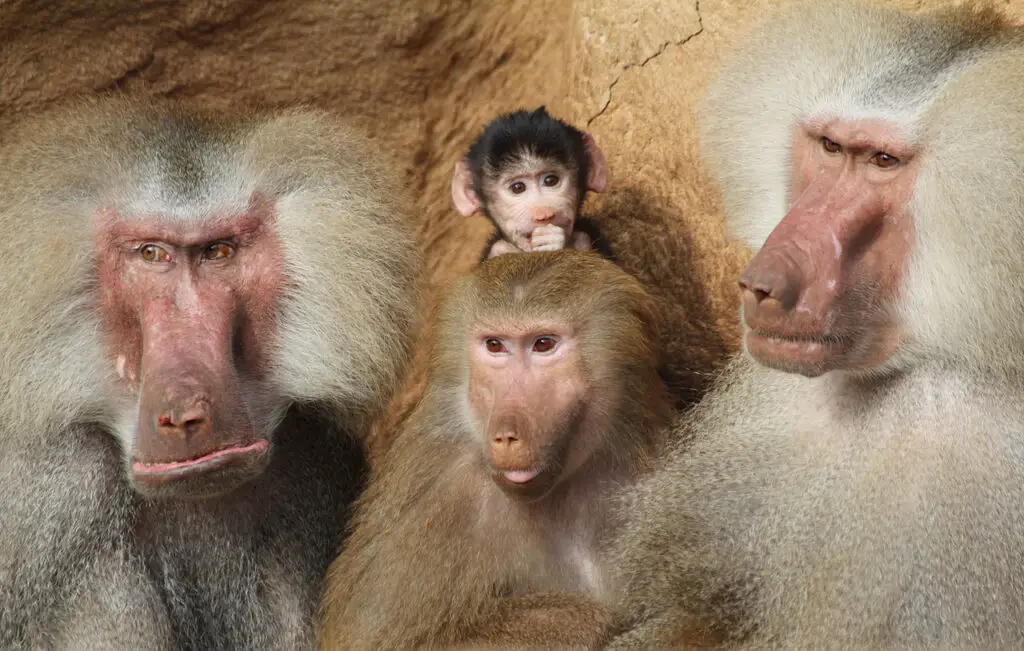
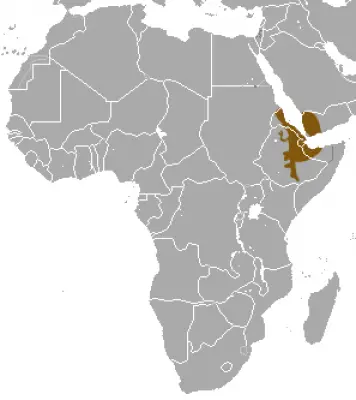
Where do Hamadryas Baboons live?
Hamadryas Baboons are one of those baboon species that can survive in diverse habitats. They once used to live in Egypt, but at present, they are extinct in Egypt.
They are one of those baboon species that can be found in Arabian Peninsular countries like Yemen, Oman, Qatar, Bahrain, Kuwait, Saudi Arabia, and the United Arab Emirates as well.
In fact, it is to be highly noted that there are no other kinds of baboon that resides as far north as the Hamadryas baboons.
They can survive in vast diverse habitats, unlike the other African species. They can well survive in the Sub-desert, Steppe, Plains, Arid bushland areas, Savannas, and also in many other Rocky areas as well.
So, they can be seen in the habitat range of the Red Sea in Eritrea to Ethiopia, Djibouti, and Somalia including in all of the Arabia Peninsular countries in the north.
Both of the African and Arabian dwelling Hamadryas Baboons species share the same kind of diet i.e they are all omnivorous in nature.
In fact, the Arabian dwelling ones are much more common to feed on plants like cactus fruit and palm nuts, which the African ones don’t.
However, all Hamadryas Baboons species feed on the meat of small mammals, rodents, and even birds very often.
Due to their great adaptations to survive in some of the most diverse habitats around the globe, and so they do exist in stable even growing populations.
And so, they are stated Least Concerned species by IUCN as they do not qualify as being threatened, near threatened, or conservation dependent due to their increasing population count.

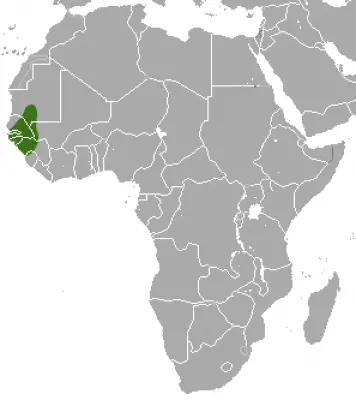
Where do Guinea Baboons live?
Guinea Baboons live in parts of Western Africa and they are native to this part of the globe.
They mainly inhabit a small portion of western equatorial Africa in regions of dry forests, grassy, rocky, steppe habitats, and bush savannas or steppes.
They are mostly seen in some of the Western African countries that include Guinea, Senegal, Gambia, southern Mauritania, and western Mali.
They are also widespread in the woodlands and savannas of various coastal West African countries of Senegal, Sierra Leone, Mauritania, Guinea-Bissau, Guinea, and Gambia.
They do mostly prefer the regions of woodland savanna for living, and that they also live in isolated populations throughout Western Africa and they don’t interbreed.
However, it has been also seen that when their territories overlap, they follow interbreeding. Meaning that they breed with another species of a different baboon troop and this helps in genetic diversity.
Due to their segmented and small population count, we can also say that due to their small range and the loss of its habitat, the Guinea baboon is given the status of Near Threatened by the IUCN.
Being considered as Near Threatened by IUCN means that they may be considered vulnerable to extinction in the near future, although they do not currently qualify for the threatened status.
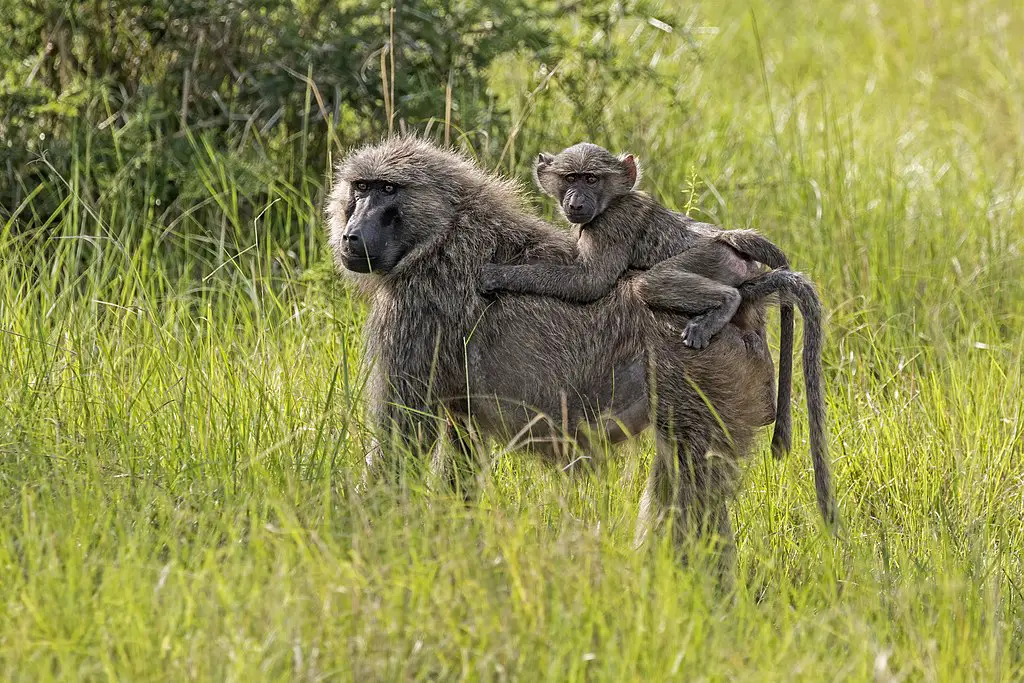
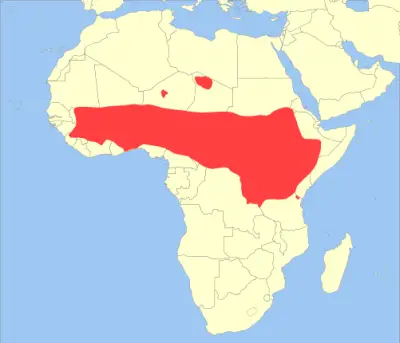
Where do OIive Baboons live?
Olive baboons live in Savannas, Steppes, and Forests type of habitats and so they can be found in most parts of equatorial Africa that includes around 25 countries throughout Africa extending from Mali eastward to Ethiopia.
Many small isolated populations can also be seen living in dry desert areas of the Sahara, mostly in the less-arid highlands.
They have been in also seen inhabiting near human habitation and cultivation, which also includes grassland regions, and riverine moist, evergreen forested regions as well.
They are so widely spread within equatorial Africa that their territorial boundaries overlap with that of the other baboon species like Kinda Baboons, Yellow Baboons, and Guinea Baboons.
Due to the overlapping of various baboon species and other different troops of the same Olive Baboon species, it has been seen that inbreeding and hybridization have also been occurring in many of the regions.
Olive baboon species have adapted a lot in vastly different types of locations in equatorial Africa. And that, it has been seen that not all Olive baboons live in open woodlands bordered by the Savanna ecosystem.
In fact, there are so many that inhabit the evergreen tropical forests in many of their range countries as well.
And also that the olive baboons are listed as Least Concerned by the IUCN because of their widespread habituation and abundant presence, and so there are no major threats believed to be resulting due to the declination of their population count.
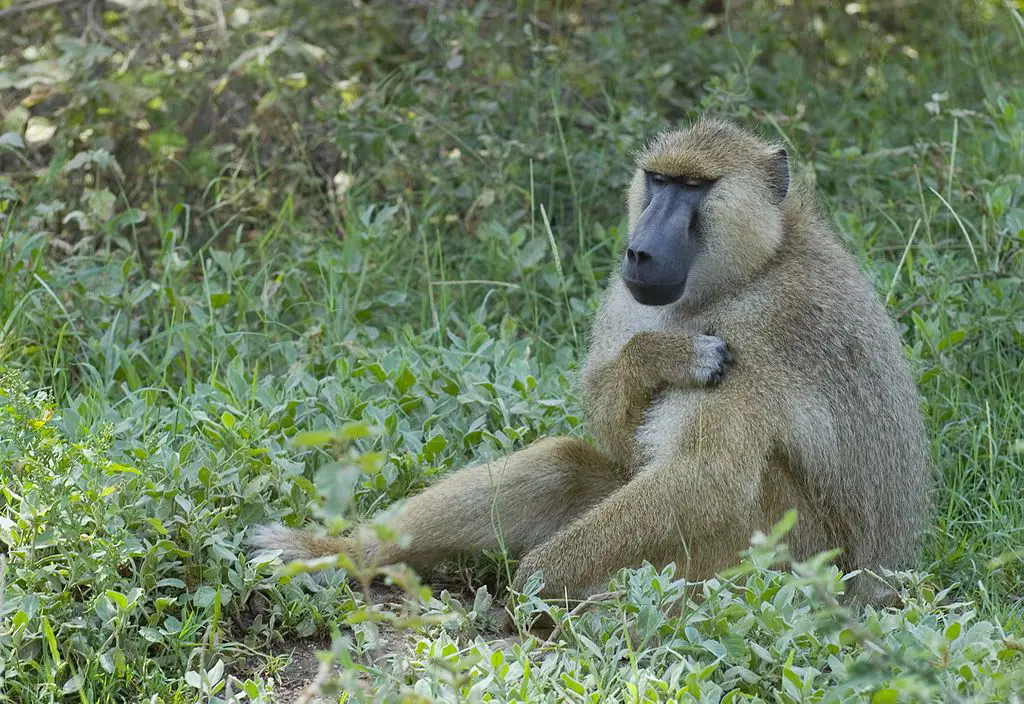
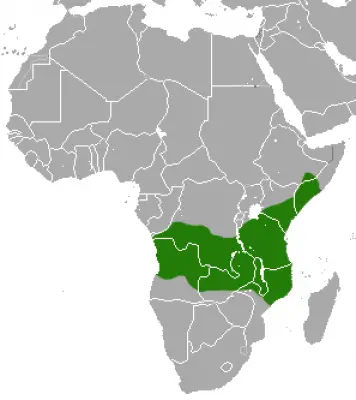
Where do Yellow Baboons live?
Yellow Baboons prefer Savannas, and light forests type of habitats, and so all of them are seen to live in eastern African countries from Kenya and Tanzania to Zimbabwe and Botswana.
Many sparse populations of Yellow Baboons can also be seen in parts of central African regions starting from the western regions to eastern coasts in Angola, Zambia, Malawi, Mozambique, Tanzania, Kenya, the Democratic Republic of the Congo, and Somalia.
Although they are very much adapted to inhabit a mixed woodland-grassland ecosystem of Savannas, but they can also inhabit various scrub, and gallery forested regions of eastern Africa as well.
Due to their widespread population count and even growing populations, Olive Baboons are listed as Least Concerned by the IUCN.
And that if their current type of ecosystem interactions prevails there are very very fewer chances for them to be listed as threatened or endangered in the very near future.
However, in recent years various threats are approaching this species as more habitat destruction, hunting, and also the growing human population within the natural range of this species is multiplying each and every year.
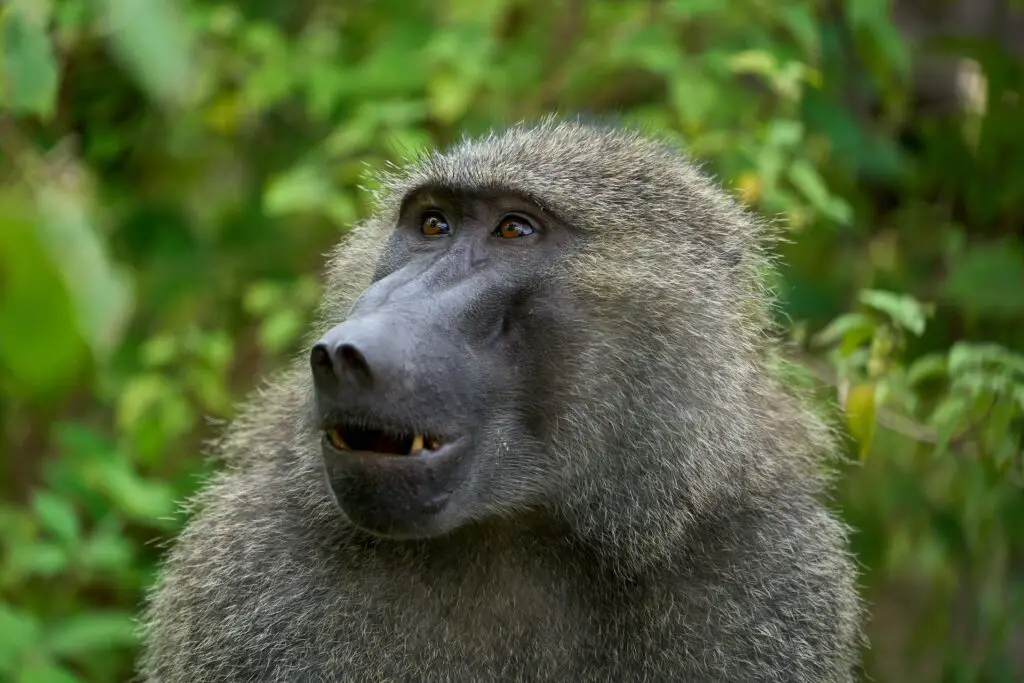
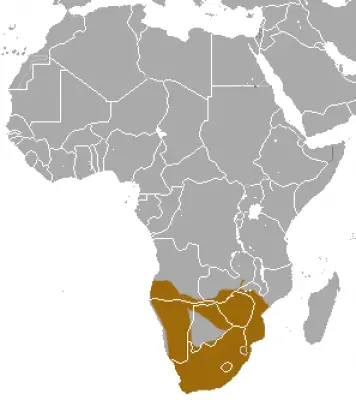
Where do Chacma Baboons live?
Chacma Baboons are one of the most famous species of baboons in Africa. They highly inhabit the Woodland, Savanna, Steppes, Sub-desert, and Grassy alpine slopes throughout the parts of Southern Africa ranging from South Africa’s North to Angola, Zambia, and Mozambique.
They are mostly populated in the regions of Angola, Botswana, Mozambique, Eswathi, Lesotho, Mozambique, Zimbabwe, and Namibia. Also that, they are native to these regions.
They are adapted to diverse habitats that include the grassy alpine slopes of the Drakensberg to the Kalahari desert.
Chacma Baboons are also called Cape baboons or even with the name of Savanna baboons n the Western Cape regions of southern Africa.
Wherever they are, they always tend to live close to a freshwater source as they need to drink water every day, and generally also near to tall branchy trees for them to live, spectate their surroundings, and sleep at night.
They are also considered as Least Concerned species by IUCN as they have a good even growing population and have no possible chances of getting Threatened in the near future.
